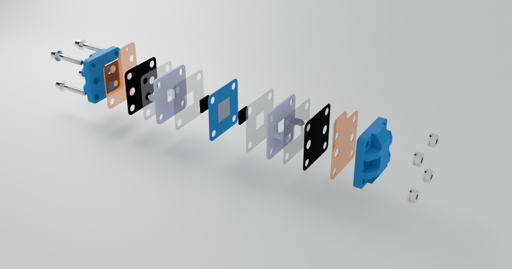from callcc@lemmy.world to technology@lemmy.world on 20 Jul 12:02
https://lemmy.world/post/33224132
cross-posted from: lemmy.world/post/33224011
The guys at Flow Battery Research Collective have been designing a Redox Flow Battery development kit that you can build yourself using a 3d printer and a few tools. It’s a desktop size flow battery that you can use to either do your own research, e.g. on different electrolytes or just to replicate their experimental findings.
Redox Flow Batteries have the potential to become grid scale or home electric energy storage solutions that are way better for the environment than current lithium based batteries. They can often scale power and capacity independently and allow for repairs.
The FBRC project wants to spread the knowledge on RFBs and help kickstart a global community that develops sustainable energy storage technology in an ope source fashion.
Beware that the project is still in its infancy and sourcing the materials can be a bit of a challenge. Be sure to ask around in the forums for help!

threaded - newest
What kind of kWh per dollar are we looking at here?
What does a 10 kWh setup look like?
What are the anode and cathode
The roadmap defines 3 milestone batteries. The first is released, it’s a benchtop device that you can relatively easily build on your own. It has an electrode side of 2 x 2cm2. It does not store any significant amount of energy. The second one is being developed right now, it has a cell the size of a small 3d printer bed (20x20cm) and will also not store practical amounts of energy. It will hopefully prove though that they are on the right track and that they can scale it up. The third battery only will store significant amounts of energy but in only due end of the year (probably later).
Current Vanadium systems cost approx. 300-600$/kWh according to some random website I found. The goal of this project is to spread the knowledge about Redox Flow Batteries and in the medium term only make them commercially viable.
The aniolyth and catholyth are based on the Zink-Iodine system in an aqueous solution. There are a bunch of other systems though, each with their trade offs. The anode and cathode are both graphite felt in the case of the dev kit.